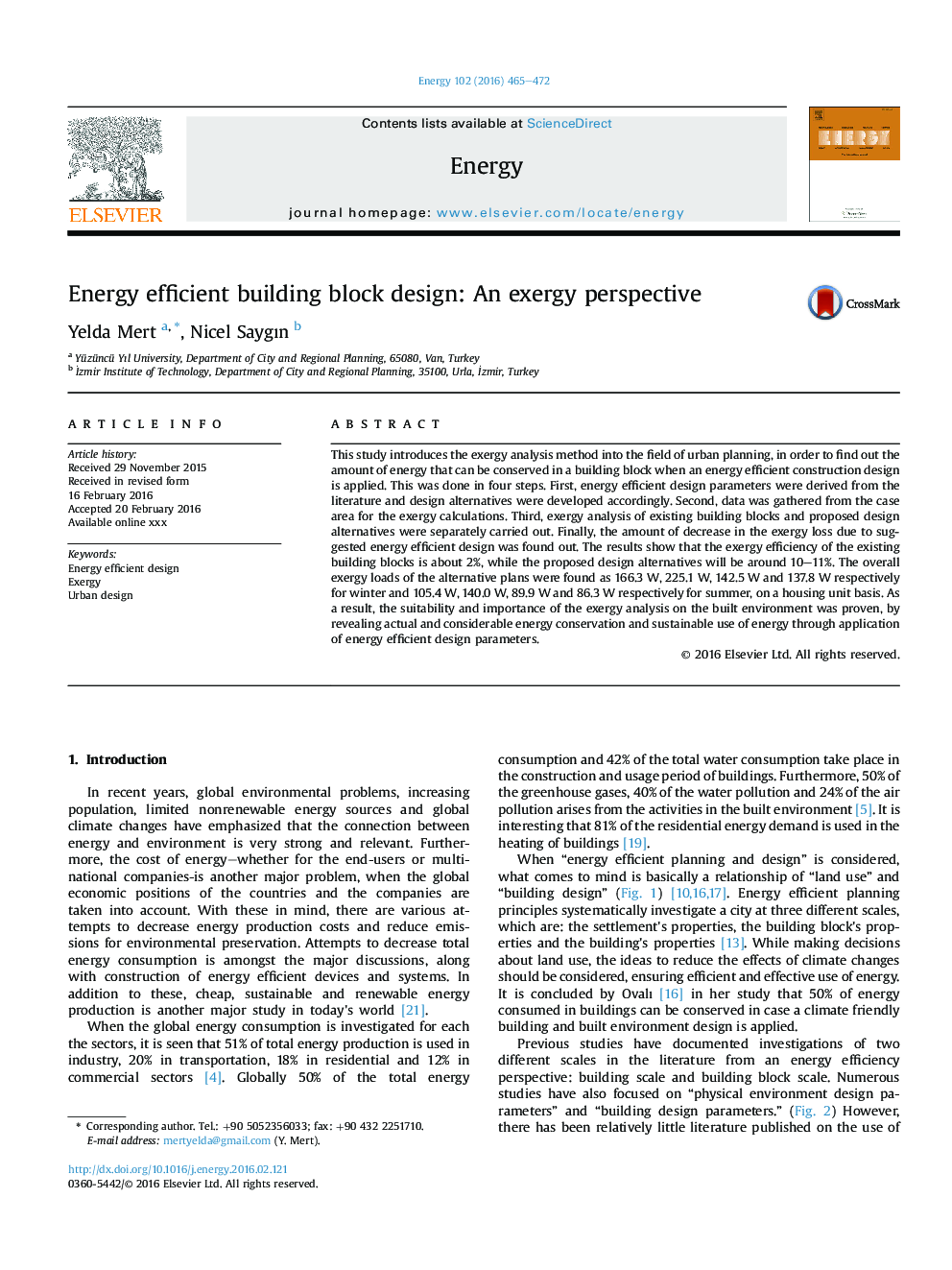| Article ID | Journal | Published Year | Pages | File Type |
|---|---|---|---|---|
| 8074057 | Energy | 2016 | 8 Pages |
Abstract
This study introduces the exergy analysis method into the field of urban planning, in order to find out the amount of energy that can be conserved in a building block when an energy efficient construction design is applied. This was done in four steps. First, energy efficient design parameters were derived from the literature and design alternatives were developed accordingly. Second, data was gathered from the case area for the exergy calculations. Third, exergy analysis of existing building blocks and proposed design alternatives were separately carried out. Finally, the amount of decrease in the exergy loss due to suggested energy efficient design was found out. The results show that the exergy efficiency of the existing building blocks is about 2%, while the proposed design alternatives will be around 10-11%. The overall exergy loads of the alternative plans were found as 166.3Â W, 225.1Â W, 142.5Â W and 137.8Â W respectively for winter and 105.4Â W, 140.0Â W, 89.9Â W and 86.3Â W respectively for summer, on a housing unit basis. As a result, the suitability and importance of the exergy analysis on the built environment was proven, by revealing actual and considerable energy conservation and sustainable use of energy through application of energy efficient design parameters.
Related Topics
Physical Sciences and Engineering
Energy
Energy (General)
Authors
Yelda Mert, Nicel Saygın,
